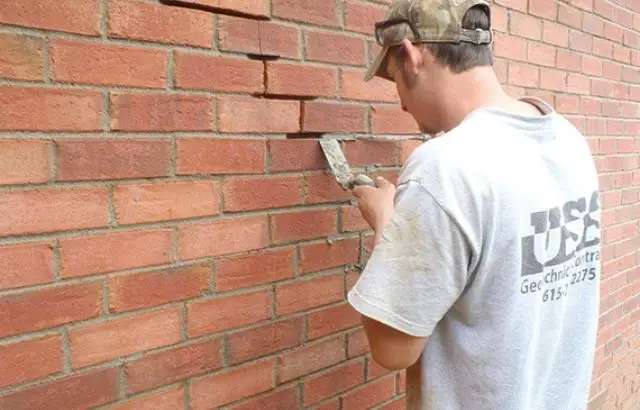The purpose of a sump lift pump is to stop water inundating your basements. A sump pump when it decides to break or a power outage occurs due to heavy rainfall. The unit is unable to perform the only task for which it stands intended. Consequently, it is best to know how to get water out of the basement without a pump. The best arrangement is to have an appointment to eliminate flooding when flood water is in your home. Having large amounts of water is the perfect way for mold and mildew to enter, which can cause many different problems, including respiratory issues, not to mention structural damage, not to mention damage to the basement floor if left untreated for long periods.
Then there is the damage that water can cause on its own. It is best to remove the water before too much damage occurs. Getting the thousands of gallons of water off your property will be your priority.
What alternatives do I have if I don’t have power or my mop in good condition?
Should an emergency occur, it would be best to have a solution in place beforehand? No one wants to have to go through this situation.
How to Get Water out of Basement without a Pump
Use a mop
- It may seem like an obvious solution, but a standard household mop is a great place to start.
- Take a bucket, start soaking up the water, and throw the buckets outside, away from your home. If the water is intense, to begin with, you can start by scooping the water out with the bucket and cleaning up the remaining water after that.
- Empty the buckets full of water at least 20 feet from your house so that the water does not back up.
Use a hand pump
- A hand pump does not require electricity and could therefore efficiently serve larger flooding jobs.
- This pump will require access to the sump pump hold and will connect directly to the unit.
- A garden hose will then be screwed onto the other end, and that’s it.
- The water is now ready to be sent from your basement to your garden.
Use a hand crank pump.
- Finally, you can do it like the old days and use a traditional hand crank pump.
- Sometimes, if the electricity and a utility are still out due to the storm, you will have no other option to use this type of pump if you have nothing else.
- Sure it may take a while with just one person, but ask a few people to help you get it done faster.
Bring a generator
- If you have access to a generator, it’s perfect for a situation like this.
- If there is no electricity and no working sump pump, a generator can power the sump pump and start the draining process. It drains water by itself.
- The generator can also power a wet vacuum until professionals arrive.
- Always make sure the generator is charged, spent, and ready to go in case of an emergency.
- In addition to these alternatives, you can also siphon water out of the basement, as long as you understand how to use it correctly.
How can I Get Water out of my Basement if I have Electricity?
A sump pump is the first line of pumping out shallow water. Sometimes, however, sump pumps can stop working due to mechanical failure or power outages.
A basement pumps out can be a safe job if handled correctly. There are many issues to consider and think about when pumping out a basement. There can be hidden dangers when pumping your basements, such as walls, ceilings, and floors collapsing due to water damage.
Many people will start pumping out water during a storm or even before it ends, but you should never pump out your flooded basement until the floodwaters no longer cover the floor. You’ll want to wait until the water completely reseeds itself.
It doesn’t matter that you’re going to end up with some water damage in your basement. That’s what happens when it floods.
When you start pumping out the water, you should only pump out a foot of water, and then, with a piece of chalk or a marker, you should mark the wall and come back the next day and see if the water level went up. If the water level is now higher, observe that it is not yet time to drain the basement.
Read More: How Long Does It Take To Finish A Basement
Instead, if this happens, the best thing to do is to wait another 24 hours and pump another foot of water.
Go back the next day, and if this time the water is at the same mark or below, it is now the same to pump a little. Once the water level has stayed at the line you marked on the wall, you can start pumping, but only pump at least 1 foot of water per hour until the basement is fully drainable.
It is better to do it safely and slowly than quickly, and someone gets hurt. Remember that every way is not the best for your situation, but you can choose any other options if you find a sump pump hole.
Use a wet/dry vacuum
- If your sump pump has decided it’s on its last leg and has stopped working, but you still have electricity in your home, a wet/dry vacuum is an excellent option for removing water from your basement.
- Turn the vacuum on and start sucking up the water as you go. Work your way across the room to the sump pit until all the water is gone.
Trash-water pump:
- Pumping out a flooded basement is extremely important.
- In this regard, the trash pump is an excellent pump for pumping out any large area of water.
- Some trash pumps can pump hundreds and thousands of gallons of toilet per hour.
- To pump your basement with a trash pump, you will need two hoses.
- A solid length of hose attached to the trash pump’s vacuum side will be the first hose. Also, this is the one side of this hose that will get stuck in the water.
- The other hose will be a flexible spiral hose with lengths ranging from the distance you need to pump the water.
- A discharge hose is the discharge hose and will be attached to the discharge side of the pump.
How to Pump your Basement with a Pool Pump
Although it may not be the quickest method, if you have a pond and pool hoses, you can use an in-ground pool pump to pump your basement.
You should bear in mind that this kind of pump functions differently from a garbage pump since it has a plastic impeller and strainer basket. If you stick the vacuum end of the hose, you should take great care to ensure that it doesn’t.
suck up a lot of debris, which causes the impeller to clog. Use a pool house for both the suction hose and the discharge of this pump as well as a garbage pump.
Most aquatics pumps may be readily converted to 120/240 volts by switching out two wires on the motor’s rear. Additionally, you should make sure to often inspect the strainer basket.
How to Pump your Basement with an Electric Submersible Pump
The type of pump is called a “submersible water pump” or “water removal pump.” It is an excellent way to pump water out of a flooded basement. Various types of submersible pumps are available in many discharge sizes depending on the power of the pump.
They are a little different from other types of pumps because they only use one discharge hose. At the bottom of your pump is the suction side of the pump. A water pump is equipped a few meters above the bottom of the pump to allow the water to enter from the suction side of the pump.
How to Pump your Basement with a Service Pump
A service pump is a small pump that can be used with two garden hoses, but it does not transfer as much water as the other methods we have described, but this pump will pump out the basement over time.
The general rule of thumb is that you should replace anything porous if it were saturated with water to avoid the risk of mold growth. This includes drywall and carpeting. Some companies will come in and dry carpet, but their service is usually almost as expensive as replacing the rug.
For walls, remove drywall and allow the wood framing to dry completely before installing new drywall. Using a dehumidifier can speed up the drying process. Check with your local health department for advice on reducing the risk of mold.
How to Get Water out of Basement without a Pump: FAQs
Which can I use to pump the water from my basement?
There are several ways to pump water out of your basement if you don’t have a sump pump. Among the most recognized alternatives are a trash pump, a service pump, a submersible pump, and a hand crank pump.
How can I pump water without a pump?
You can pump water using any of the methods explained in this article. It would be best if you use extreme caution when using any of the plans.
How do you drain a flooded basement?
If your basement floods, don’t rush to pump it out. Pump the water level down 2 to 3 feet, mark the water level and wait overnight. Remove vents or registers from heating and air conditioning ducts, wall switch covers, and outlets that flooded.
Conclusion
On very few occasions, our basement may flood, either by heavy rain or for any other reason. So having a suitable drain is essential.
Each brick can be damaged and become infected with mold if you let too much time pass. If necessary, make use of impellers that will allow you to solve this as quickly as possible.
However, the most important thing is to be prepared for this kind of case and control the situation as soon as possible. Waiting too long can be the worst way to solve this problem.




